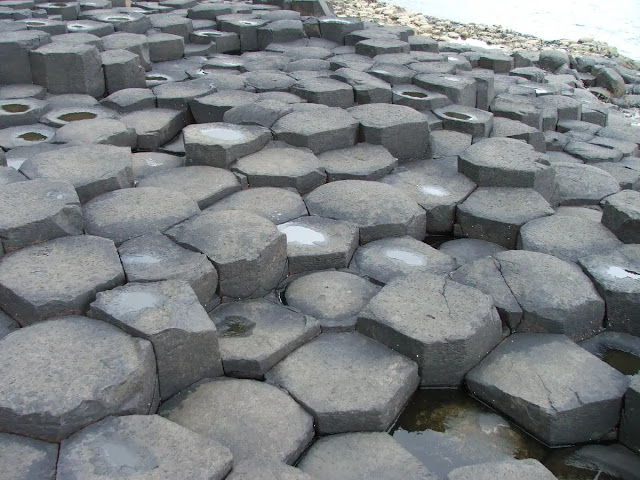Opalized Petrified Wood
Opalized petrified wood is a type of petrified wood that has been partially or completely replaced by opal. Wood opal is formed when silica-rich groundwater seeps into buried wood and replaces the organic matter over time. The resulting stone can have a variety of colors and patterns, depending on the type of wood and the amount of opalization. It is not a recognized mineral, but rather a gemstone.
Wood opal is a form of petrified wood which has developed an opalescent sheen or, more rarely, where the wood has been completely replaced by opal.
 |
| Colorful patterns are displayed in a cross-section of petrified
wood in the Petrified Forest National Park, located in northeast
Arizona. Photo by: Patrick Fuchs |
How is such a transformation possible?
Well, it can only take place under the right set of circumstances.Opal forms in cavities within rocks. If a cavity has formed because a bone, shell or pinecone was buried in the sand or clay that later became the rock, and conditions are right for opal formation, then the opal forms a fossil replica of the original object that was buried.
The most valuable opalized petrified wood is the kind that has a play of colors, known as opalescence. This is caused by the way the light interacts with the silica spheres that make up the opal. The size of the spheres determines the colors that are seen, with smaller spheres resulting in blues and larger spheres in reds.
We get opalised fossils of two kinds
1. Internal details not preserved:
2. Internal details preserved:
If the buried organic material hasn’t rotted away and a silica solution soaks into it, when the silica hardens it may form an opal replica of the internal structure of the object. This happens sometimes with wood or bone.Key features of opalized petrified wood:
- It is a translucent to opaque stone.
- It can have a variety of colors, including white, yellow, orange, red, blue, green, and black.
- It often has a play of colors, known as opalescence.
- It can be cut into cabochons, beads, and other shapes.
- It is a relatively soft stone, with a hardness of 5.5 to 6.5 on the Mohs scale.
- It is a fragile stone and should be handled with care.



%20(1).webp)




